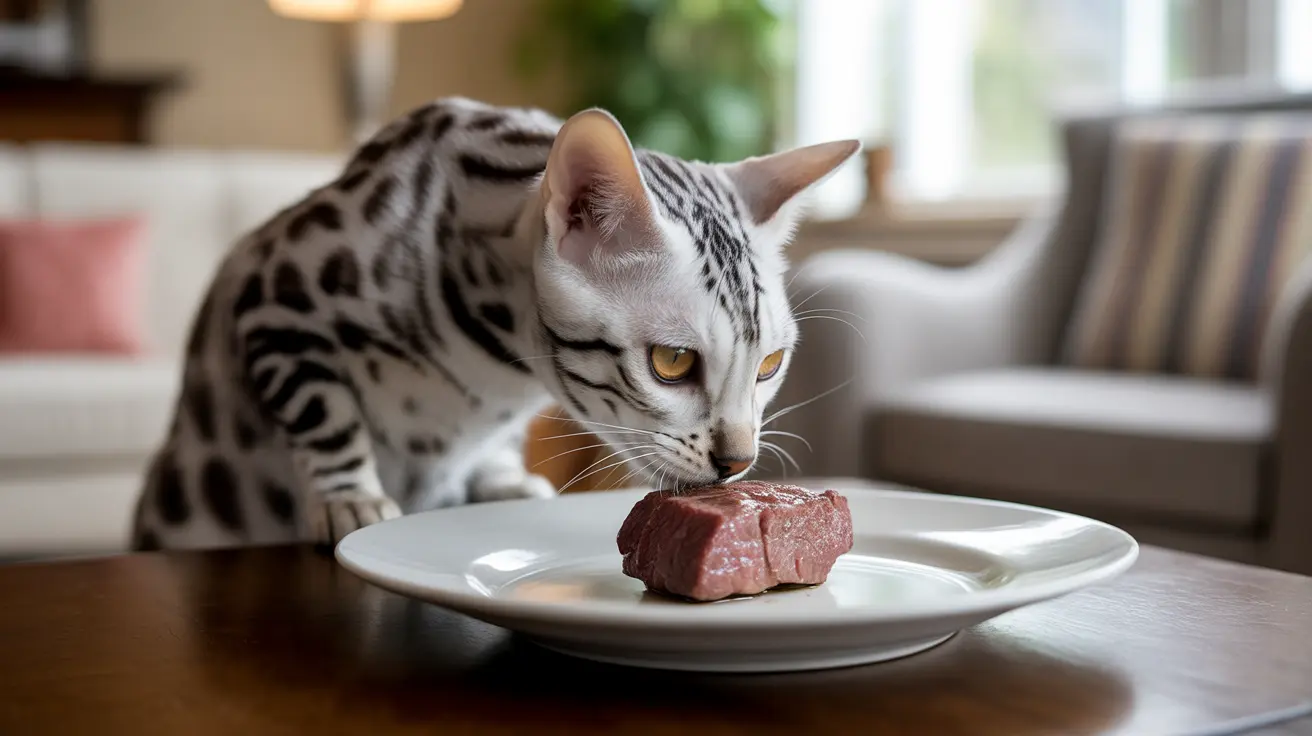Many cat owners wonder about incorporating beef into their feline friend's diet. As obligate carnivores, cats naturally require meat-based protein in their diet, making beef a potentially beneficial addition to their meals. However, it's crucial to understand how to safely feed beef to cats to avoid potential health risks and ensure maximum nutritional benefits.
In this comprehensive guide, we'll explore everything you need to know about feeding beef to your cat, including proper preparation methods, nutritional benefits, potential risks, and recommended serving sizes. Whether you're considering adding beef to your cat's diet or simply curious about its safety, this article will provide you with expert insights and practical advice.
The Nutritional Benefits of Beef for Cats
Beef offers several important nutritional benefits for cats. As a high-quality protein source, it contains essential amino acids that cats need for muscle maintenance and overall health. Beef is particularly rich in:
- Protein for muscle development and maintenance
- Iron for healthy blood function
- Zinc for immune system support
- Taurine (especially in organ meat) for heart and eye health
- B-vitamins for energy metabolism
Safe Preparation Methods for Feeding Beef to Cats
Proper preparation is crucial when feeding beef to cats. The safest approach is to cook the meat thoroughly without any seasonings or additives. Here's how to prepare beef safely:
- Remove all visible fat
- Cook thoroughly without oils or seasonings
- Cut into small, manageable pieces
- Serve at room temperature
- Store unused portions properly in the refrigerator
Recommended Serving Sizes and Frequency
When introducing beef to your cat's diet, moderation is key. Beef should be considered a supplement to their regular cat food rather than a complete meal replacement. Here are some guidelines:
- Start with small portions (about the size of your fingertip)
- Limit beef treats to 10% of daily caloric intake
- Feed as an occasional treat, not a daily staple
- Monitor your cat's reaction to the new food
Potential Risks and Considerations
While beef can be beneficial for cats, there are several important risks to consider:
- Raw beef may contain harmful bacteria and parasites
- Some cats may have beef allergies
- Improper preparation can lead to choking hazards
- Too much fat content can cause digestive issues
- Seasoned or processed beef can be toxic
How to Introduce Beef to Your Cat's Diet
When adding beef to your cat's diet for the first time, follow these steps:
- Start with a tiny amount
- Observe for any adverse reactions
- Gradually increase portions if well-tolerated
- Maintain regular feeding schedule
- Keep track of your cat's response
Frequently Asked Questions
Can cats safely eat beef, and what nutritional benefits does it provide?
Yes, cats can safely eat beef when properly prepared. It provides essential proteins, amino acids, and minerals like iron and zinc that support overall feline health. However, it should be cooked thoroughly and served plain without seasonings.
How should beef be prepared before feeding it to my cat to avoid health risks?
Beef should be thoroughly cooked without any seasonings, oils, or additives. Remove all visible fat, cut into small pieces, and serve at room temperature. Never add garlic, onions, or other seasonings, as these can be toxic to cats.
Is it safe to feed my cat raw beef, and what are the potential dangers?
While some cat owners feed raw beef, veterinarians generally discourage this practice due to risks of bacterial contamination and parasites. Raw beef can contain harmful pathogens like Salmonella and E. coli that can make both cats and humans sick.
How much beef can I give my cat without upsetting its balanced diet?
Beef should make up no more than 10% of your cat's daily caloric intake. It should be offered as an occasional treat rather than a meal replacement, ensuring the majority of nutrition comes from complete and balanced cat food.
What signs of beef allergies should I watch for in my cat after feeding it beef?
Signs of beef allergies in cats may include itching, skin rashes, vomiting, diarrhea, excessive grooming, and changes in behavior. If you notice any of these symptoms, discontinue beef and consult your veterinarian.
Conclusion
While beef can be a healthy addition to your cat's diet, it's essential to introduce it carefully and follow proper preparation guidelines. Always consult with your veterinarian before making significant changes to your cat's diet, and monitor their response to new foods carefully. When fed appropriately, beef can be a nutritious and enjoyable treat for most cats.






